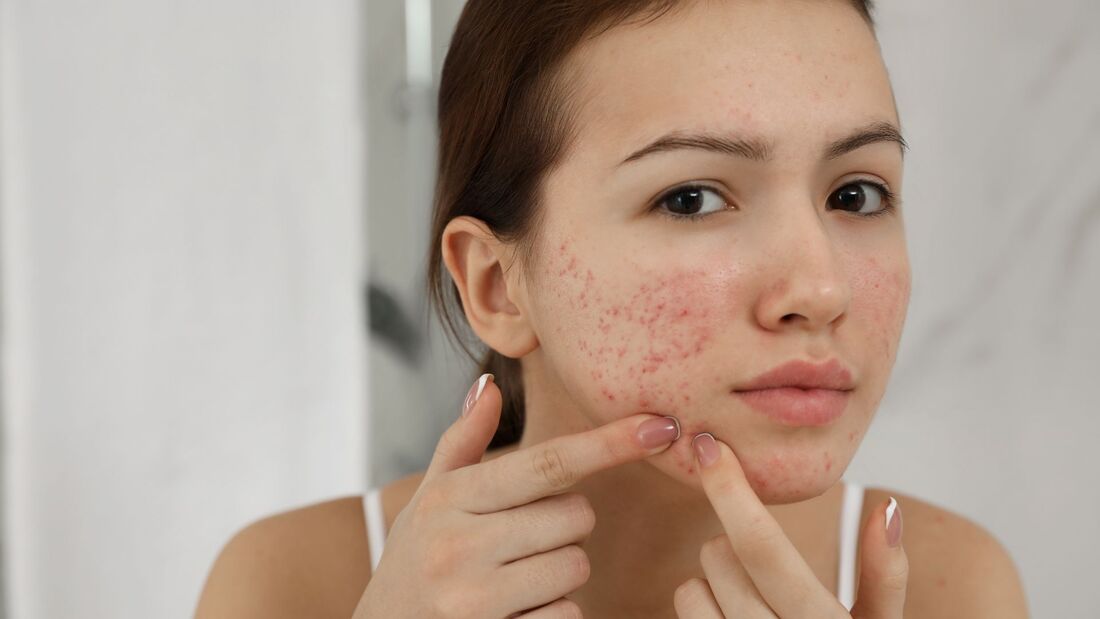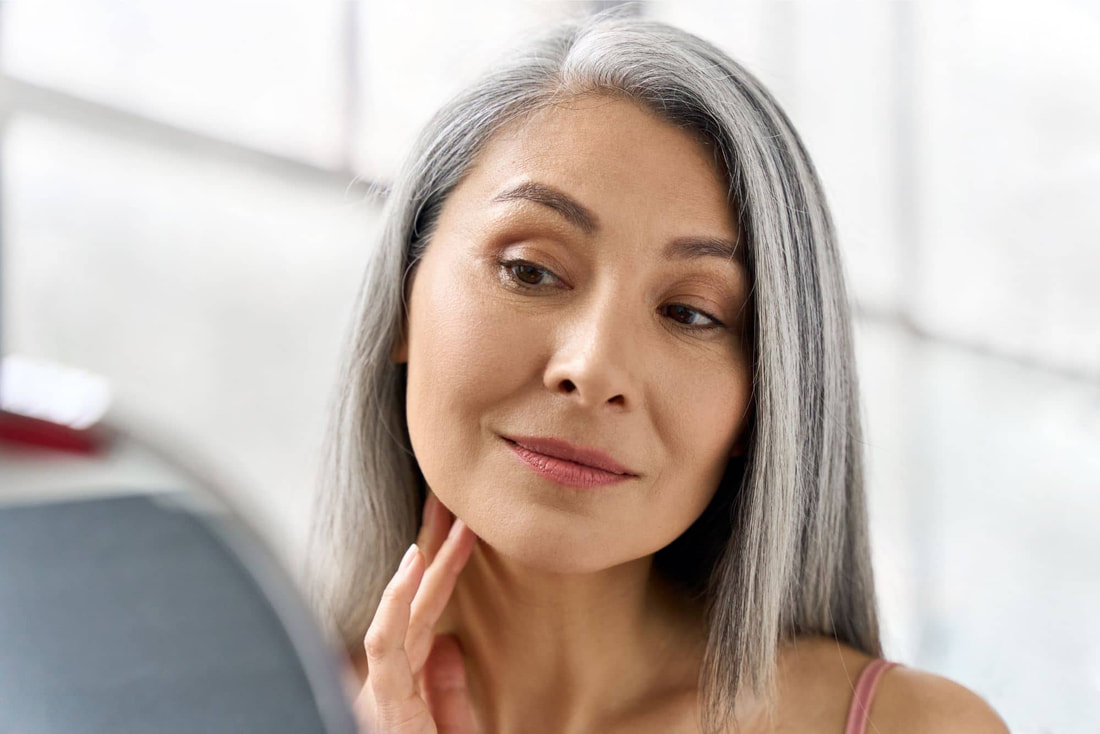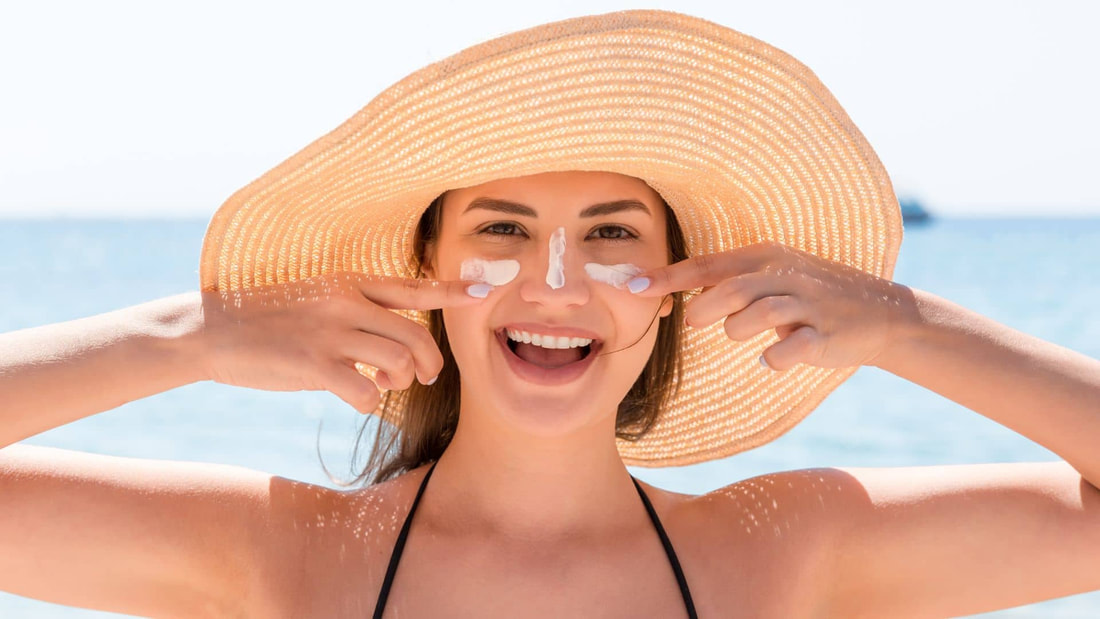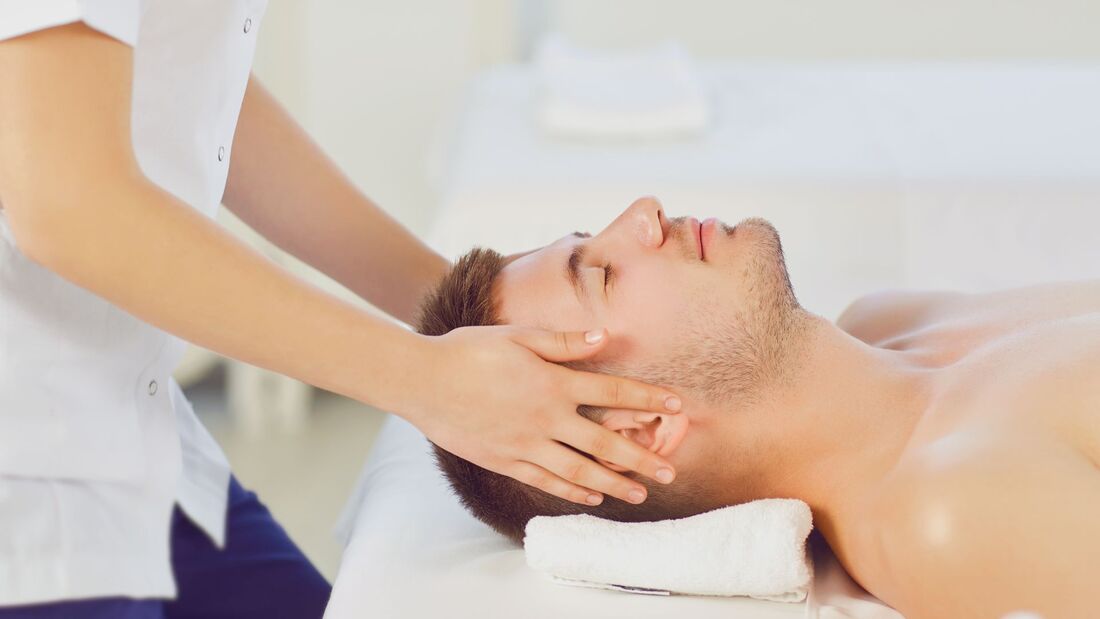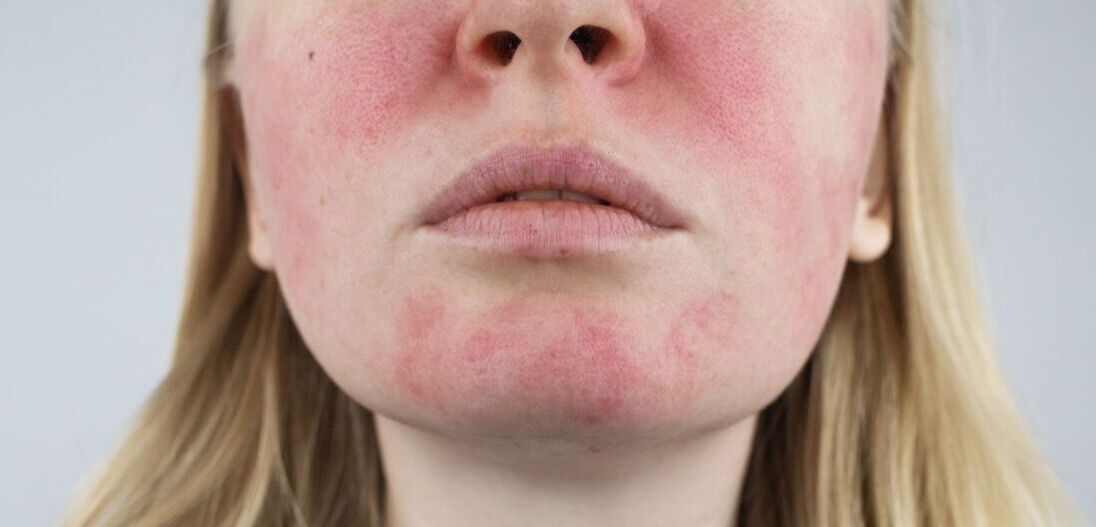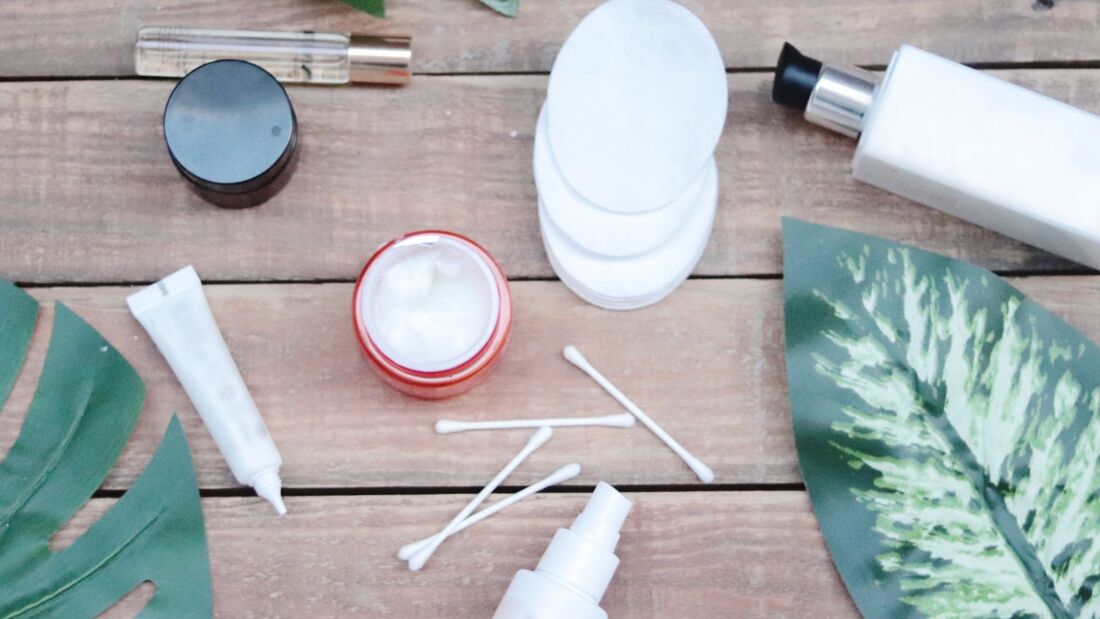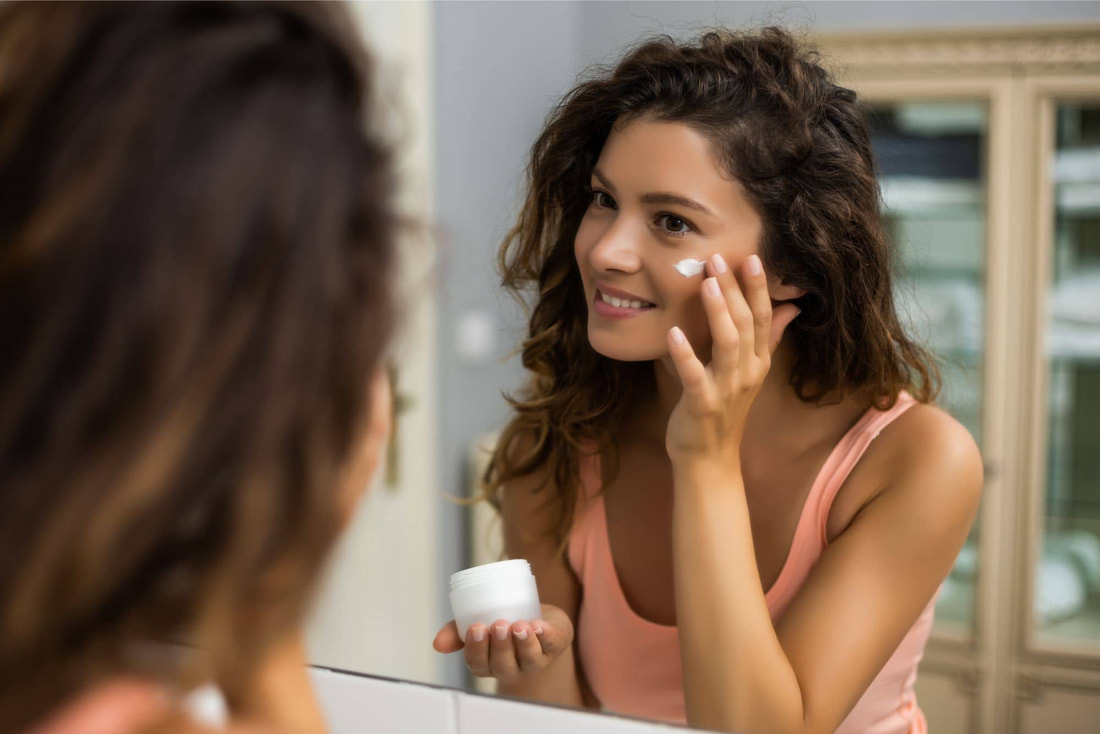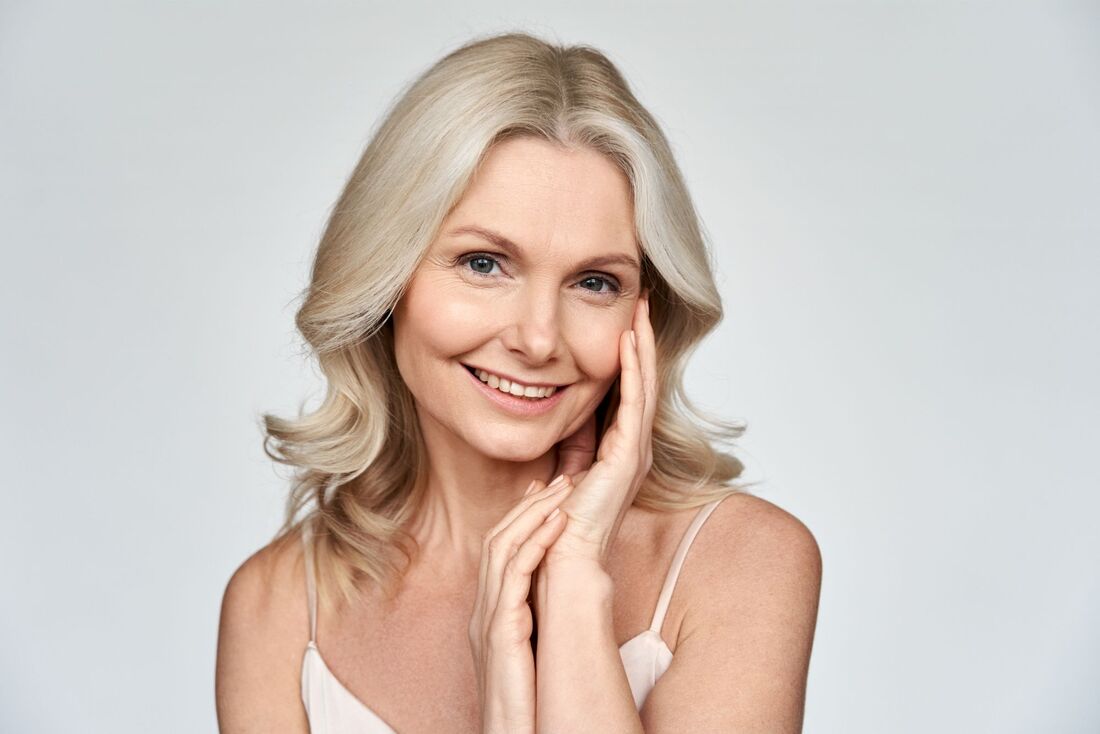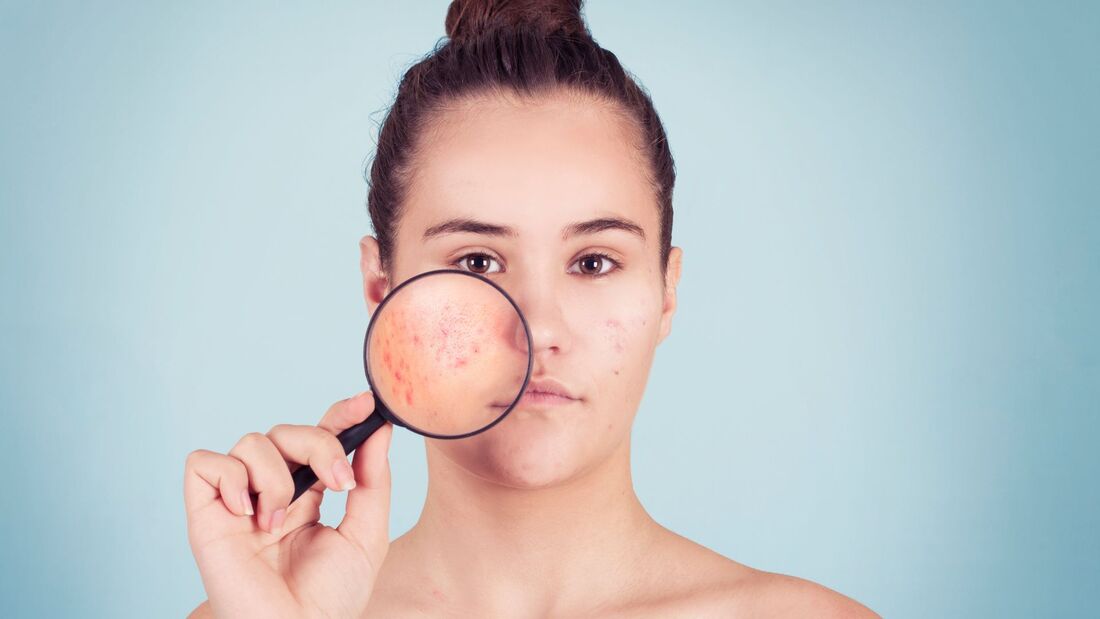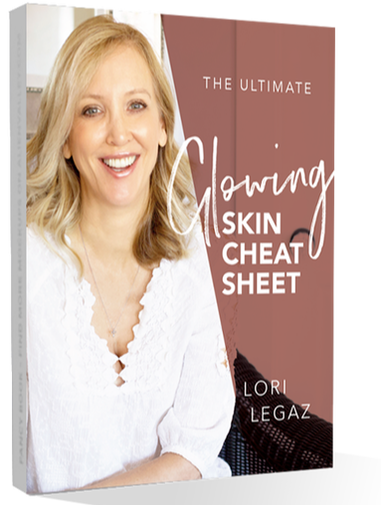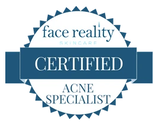|
Here on the Simply Skin blog, we talk a lot about acne. That’s because it’s one of the most common skin conditions, affecting around 50 million Americans annually. But as common as it is, not all acne is created equal. In fact, for all the words we use to describe it — blemishes, bumps, pimples, breakouts — many people don’t realize that there are actually several distinct types of facial acne, each with their own appearance, causes, and treatment options. To see clearer skin, it helps to know what types of blemishes you're dealing with. In this blog post, let’s explore the different types of acne — how they form, what they look like, and what you can do to treat them. Types of Facial AcneIn almost all cases, acne happens because the pores in your skin are clogged. Clogged pores can happen when there is too much oil, bacteria, or skin cell production. But the types of acne and treatment options can vary based on a variety of factors. There are three main types of facial acne: comedonal acne, inflammatory acne, and cystic acne. Noninflammatory (or Comedonal) AcneOne of the different types of acne we’ll discuss — comedonal — is non-inflammatory. This is usually harder to treat than inflammatory acne. You’re probably familiar with comedonal acne because it’s most closely associated with blackheads and whiteheads. Comedones are formed when dead skin cells and sebum clog hair follicles, and are commonly found on the forehead, nose, and chin.
Types of acne treatment that work well for for comedonal acne include topical exfoliants, which help to unclog pores. Inflammatory AcneInflammatory acne, on the other hand, takes the clogged pore a step further with a bacterial infection — causing an immune response that results in inflammation. Unlike whiteheads and blackheads, inflammatory acne is a type of acne on the face that's characterized by the appearance of red, swollen, and often painful pimples. There are two types of inflammatory acne:
Types of acne treatment for inflammatory acne include topical mandelic acid or benzoyl peroxide, which help to reduce inflammation and kill bacteria. Nudolocystic (or Cystic) AcneNodulocystic or cystic acne is a form of inflammatory acne that (as the name suggests) often includes acne nodules or cysts. This leads to severe breakouts that penetrate deep into the skin and often cause permanent acne scars when they heal. You’re probably familiar with this type of facial acne because of how painful it can be — often feeling akin to a bruise.
This is considered one of the most severe types of acne on the face — so if you have acne that looks like this, you’ll need the help of a licensed professional to treat it. The sooner you start treatment, the fewer permanent scars you’ll have. Identifying Types of Facial AcneIt's essential to distinguish between the different types of facial acne to determine the most effective type of acne treatment. Two things to keep in mind:
Otherwise, a good way to tell what type of acne you have is by whether or not your breakouts leave scars.
Preventing Different Types of AcnePrevention measures for any type of facial acne begins with proper skin care. Wash your face twice a day with a gentle cleanser and choose products that are labeled “non-comedogenic” (meaning they’re less likely to make you break out). Avoid the temptation to pick or squeeze pimples — doing so will only make acne worse, and increases the chance of scarring. And of course, nurture your skin from the inside out by living a skin healthy lifestyle. Understanding Types of Acne and TreatmentIf you feel discouraged with your acne treatment and believe that nothing will work, don’t give up. Effective treatment is available — sometimes it just requires a little help.
An esthetician can help determine the most effective treatment options for your specific type of facial acne. And the good news is, regardless of what type you have, virtually everyone with acne can achieve clear skin. Schedule your free consultation today to learn more.
0 Comments
Sometimes navigating the world of skincare can be overwhelming — an endless barrage of expensive products, conflicting advice, and a lack of results. Thankfully, there are plenty of trained professionals out there to help you care for your skin. But even that process can be confusing: What the heck is an aesthetician vs. an esthetician? How do you know what type of specialist to turn to?
You’ve probably seen the terms "esthetician" and "aesthetician" used almost interchangeably — and it’s no wonder, since they differ by only a single letter. But as similar as they sound, the two specialties differ in a few key ways. So when it comes to an aesthetician vs. esthetician, which expert do you need? What is an aesthetician?
The word aesthetician (with an a) refers to someone who specifically performs medical skin procedures. For example, aesthetician facial care might be needed to treat skin damage from chemotherapy, burns, surgery, or other health issues.
So, what does an aesthetician do? They usually work as part of a larger team, alongside a dermatologist or plastic surgeon. They may use needles, potent acids, and other techniques and equipment that can only be performed under the supervision of a medical doctor. That’s why you’ll often hear them referred to as a medical, paramedical, or clinical aesthetician — because they can usually be found in a medical or clinical setting. If you’ve ever gotten Botox, you might have seen a clinical aesthetician there helping the doctor. Or likewise if you’re a cancer patient, burn victim, or have had other health-related issues that required attention to your skin, then you’ve likely worked with an aesthetician. What is an esthetician?
On the other hand, the definition of an esthetician (without the a) is a trained technician who specializes in skin beautification — providing services such as acne treatments or anti-aging facials. One primary difference between a medical aesthetician vs. esthetician is the part of the body they address: While aestheticians often focus on the skin as a whole, estheticians are specially trained and place particular emphasis on the face.
Rather than performing a specific procedure or addressing post-surgical damage, an esthetician takes a holistic view of your skin health. The process will usually begin with an esthetician consultation, where you’ll discuss your unique skin type and skincare goals and develop a comprehensive skincare plan. This may include curated products, facial treatments, and diet and lifestyle recommendations. Aesthetician vs Esthetician: Key Similarities
As you can see, the two professions have more in common than just their spelling and pronunciation. They are both are licensed skincare specialists, and can both help address skin-related needs.
When it comes to aestheticians vs. estheticians, neither are medical doctors — so they alone can’t diagnose skin conditions or prescribe medication. However, they do undergo extensive professional training: A licensed esthetician in California in the state will have completed 600 hours of training, a state-approved course/test, and a State Board Exam with written and practical components. Aesthetician vs Esthetician: Key Differences
Generally, estheticians focus on cosmetic treatments, and aestheticians’ roles are more medical. That means one major difference between an esthetician and aesthetician is where you go to find them.
Aestheticians most often work in medical or healthcare facilities such as hospitals, clinics, or burn or trauma centers. On the other hand, estheticians often work in beauty or relaxation facilities like spas, salons, or resorts. In fact, part of the job of an esthetician is to create an environment where clients can feel relaxed and pampered. Aesthetician vs Esthetician: The Bottom Line
At the end of the day, whether to visit an aesthetician vs. an esthetician will boil down to your skincare needs and the type of treatment you’re looking for. Both can play an important role in your overall skin health. Either way, be sure to work with a licensed skincare professional who has experience with skin like yours.
For more than two decades, I’ve been helping clients of all ages look and feel their best through the most advanced treatments and products available. Interested in learning more about esthetician services, and how to put your best face forward? Schedule your free consultation at Simply Skin today. We’ve all heard the saying: When it comes to how old you are, age is really just a number. There are a lot more factors to your health (and more interesting aspects of who you are) than how long you’ve been alive. Nevertheless, it’s hard not to notice subtle changes in the mirror as we age, and to long for the youthful skin of your past. While aging is a natural process, there are many steps you can take to keep your skin looking youthful and radiant. In this blog post, we'll share some tips on how to get younger-looking skin. How to Keep Youthful SkinOf course, the best offense is a good defense — which means the best way to have youthful skin is, well, to keep skin youthful to begin with. It’s no use trying to reduce age spots and wrinkles if you’re not also preventing new ones from occurring. Unfortunately, many of these changes are genetic and outside of our control (the medical term for this is "intrinsic aging"). However, we do have influence over “extrinsic aging,” which refers to the environment and lifestyle choices that can cause our skin to age prematurely. Here are some of the most important prevention tips for how to keep skin youthful as long as possible:
How to Get Younger-Looking SkinBut if you’re reading this, you’re probably interested in more than prevention: You want to learn how to get youthful skin by actually turning back the clock. In that case, there are plenty of tops for how to get smoother-looking skin regardless of your age. Adopt a Youthful Skincare RoutineInvesting in a high-quality skincare routine can help keep your skin looking youthful and radiant. When it comes to how to have youthful skin, many different ingredients are touted to make you look younger, but buyer beware. Choose products with proven ingredients like retinol, vitamin C, and hyaluronic acid, which are known for their anti-aging benefits. Also, be sure to follow the instructions on the product and avoid overuse. Consistency in your routine is key to youthful-looking skin, so use it every day give it time to work to see the best results. Get an Anti-Aging Facial for More Youthful SkinAn anti-aging facial is one of the most safe and effective ways to get younger-looking skin. That’s because the right treatment can yield serious long-term benefits, like restoring lost volume and elasticity and counteracting long-term damage and bad habits. I’ve found that the most effective facial to get youthful skin is the Dermasound Elite Ultrasonic facial, because it literally helps your skin on a cellular level — repairing and re-balancing skin cells by assisting in the transport of nutrients, eliminating waste, and increasing their energy source for better health, radiance, and vitality. DermaSound also stimulates collagen and elastin production, which helps heal connective tissues and produce smoother, firmer, more youthful skin. In San Diego, there’s only one place to get the exclusive DermaSound anti-aging facial — and it’s here at Simply Skin. How to Get Younger-Looking Skin: The Bottom LineRemember, it's never too late to start taking care of your skin and investing in your overall health and wellbeing. I’ve dedicated my life to helping my fellow San Diegans navigate the world of proper skin wellness, and I know how to get you younger-looking skin in as little as 3-6 months. Schedule a consultation today to learn more.
After this uncharacteristically rainy season in San Diego, it’s hard to believe that summer is right around the corner. But as those first few 75-degree days start to pop up on the forecast, we’re all probably ready to emerge from our winter cocoons and start basking in the sunshine again. However, while the sun is a source of life and vitality (and zoo days, and backyard barbecues), its rays can also be extremely harmful to our skin — causing a variety of skin problems, including premature aging, sunburn, and even skin cancer. So, before you pull those beach towels out of storage, this is a great time to refresh your memory on the best ways to protect skin from the sun. Step 1: Reduce the amount of sun on your skin to begin with.This might seem obvious, but it’s worth stating: One of the most natural ways to protect skin from the sun is to stay out of it altogether.
Step 2: Wear sunscreen!This should really be considered a "Step 1.1,” since how to protect skin from sun damage begins with wearing sunscreen daily — yes, even on cloudy days, and yes, even if you’re spending most of your time indoors. UV rays can be sneaky, penetrating clouds and windows to cause damage to the skin. So, sunscreen should be a permanent part of your skincare routine throughout the year to protect your skin from the sun. Choosing the right sunscreenSunscreen itself is nonnegotiable, of course, but you have a couple of options to choose from when selecting a product. The key difference lies in how they block UV radiation:
Of course, any sunscreen is better than no sunscreen — so the best option to protect your skin from the sun is whichever one you like wearing best and will wear most consistently. Choose a broad-spectrum sunscreen that protects against both UVA and UVB rays, with an SPF of 30 or higher. Applying sunscreen correctlyEven those who do wear sunscreen often skip some of the important instructions about how to protect skin from sun damage and make it most effective. With that in mind, be sure to follow these tips for proper application:
Step 3: Focus on facial sun protectionBecause the skin cells on your face are smaller than on the rest of your body, the skin there is also more delicate — making sun protection for the face particularly important. If you’re familiar with the Simply Skin blog, this probably won’t come as a surprise to you — since sun protection and anti-aging go hand-in-hand. If this is your first time here, maybe you don’t mind fine lines, wrinkles, and other signs of aging in the mirror… but if you’re anti-dark-spot, facial sun protection needs to be your # 1 priority. The tips for how to protect your face from the sun are similar to the rest of your body:
Take care of your skin, come rain or shime.Protecting your skin from the sun is essential for maintaining a healthy, glowing complexion — and by following these tips, you can reduce your risk of skin damage and premature aging. But at the end of the day, the best way to maintain proper skincare all year round is by working with a licensed esthetician. I can help you customize a skincare regimen for your unique needs, so you can quit worrying about the mirror and get back to having fun in the sun.
Gone are the days of thinking that facials are just for women. As the importance of good skincare has become more understood in recent decades, men are taking better care of their faces even beyond the bathroom mirror. While we try to maintain healthy skin with an at-home routine, there are some things — like taxes and automotive repairs — that are just best left to the professionals. Enter the men’s facial, a spa treatment that feels luxe but can also be found at accessible prices. Even Men’s Health Magazine now recommends facials as part of a regular grooming routine. If your complexion is in need of some maintenance and you want to transform your skin from rough to smooth, a men’s facial might be just what you need. Why should men get facials?Here in San Diego, men’s facials are particularly common — but they’re growing in popularity everywhere. That’s because facials for men focus on issues common to male skin. Research has shown that men and women’s skin can actually be very different — from hormone metabolism to hair growth, sweat rate, oil production, and more. So for men, facial care might work to address common issues like razor burn, ingrown hairs, flaky skin, or sensitivity. Not to mention, the term “thick-skinned” is not just a metaphor: Men’s skin can be up to 20-25% thicker than women’s, which can make men facial treatments even more important to ensure that products are able to penetrate the skin effectively. More great reasons that men should get facials: Unclog Pores and Reduce Pore SizeTypically, men have higher testosterone levels than women, which helps explain why they produce more oil. Combined with the fact that men also tend to have rougher skin and larger pores, this creates a high exposure to dirt and grime… and when not cleaned properly, that can lead to pimples and blackheads. During a men’s facial, most estheticians will perform extractions — which is the very precise removal of oil and dirt that’s clogging pores. Facials for men can also help avoid further skin problems like skin tags, age spots, breakouts, and more. Get a Smoother ShaveWhether it’s every day or every two weeks, the continuous dragging and scraping of a razor across your sensitive skin can cause irritation — from razor burn to inflammation to ingrown hairs. Fortunately, a good men’s facial treatment will help deep clean bumps and soothe irritated skin. The combination of exfoliation, essential oils, masks, and moisturizers that an esthetician applies during your session will address shaving’s side effects. And the smoother your skin, the smoother your shave. Learn About Good SkincareA professional esthetician makes it their business to learn about your skin and how to address the problems that concern you the most. They can look at your skin and see things you won’t from looking in the mirror. It’s like having a mechanic peek under the hood of your car. If you’re new to men’s facial treatments or skincare in general, they can teach you about your unique skin type and how to take care of it. They’re also able to give you advice on the best facial care products for men to incorporate into your skincare routine at home. Sit Back and Relax!And of course, while men’s facial care has plenty of benefits to skin health, it can also just be a luxurious way to spend an hour. Like a good barbershop visit, getting a men’s facial means laying back in a relaxing environment while an expert gets to work helping you look your best. And while a spa facial for men might sound a little intimidating, you can get the same services from your local esthetician’s office for a fraction of the price. How to Prepare for a Men's FacialOne note of caution on facials for men (or anyone, really): Don’t do your first facial before any kind of a big occasion (your wedding, a media appearance, your TED talk). As with virtually any treatment, there are potential side effects — and this is especially a factor for those with sensitive skin. If you’re prone to having reactions to certain skin care ingredients, be sure to talk to your esthetician beforehand about the treatments they’ll be using. Don’t feel the need to shave before your appointment — whether you have a full beard or slight stubble. In fact, some facial care products for men can actually benefit your facial hair, making it look healthier and feel softer. That said, if you do prefer a clean shave, make sure to do so at least 24 hours beforehand — since shaving can leave skin feeling tender, sore, and especially sensitive to products. Men's Facial in San DiegoHere at Simply Skin, I provide facials for men, women, and children of all ages. Whatever your skincare goals, I can recommend a facial treatment that will help you look and feel your best. If you’re ready to improve your complexion and enjoy your newfound confidence, schedule your free consultation to see if a men’s facial is right for you.
Rosacea (pronounced roh-ZAY-sha) is a facial skin condition that causes flushing and redness affecting over 16 million Americans — and as many as 95% of people don’t even know they have it. This makes it one of the most common but poorly understood disorders. So, what is rosacea, how do you treat it, and what are the best facials for rosacea sufferers? Today on the Simply Skin blog, we’re going to explore everything you need to know about rosacea skincare. What is Rosacea?For many people, rosacea causes more than just facial flushing and redness. Symptoms of the skin condition may also include acne-like bumps, eye irritation, and thickened skin. In fact, there are four different types of rosacea to explain the various signs and symptoms:
Because of its appearance, some types of rosacea are associated with (and often confused for) acne. This is why it’s important to speak with a dermatologist to confirm your diagnosis, because rosacea acne treatment can look much different than traditional acne treatment. Rosacea TreatmentSo, how do you treat rosacea and get rid of your facial redness? Because rosacea is a medical condition, some rosacea treatments — like topical creams, lotions, gels, or oral medications — can be prescribed by a dermatologist. They can tell you about what type of rosacea you have, and make recommendations for how to treat rosacea based on your symptoms and triggers. Facials for RosaceaHowever, if you’ve already been to a dermatologist or you’re looking for a different type of rosacea skincare, you may be surprised to learn that facials for rosacea can also help to get rid of facial redness. A licensed esthetician can provide a facial rosacea treatment to help reduce and prevent flare-ups. It’s important to note that when it comes to facials for rosacea, you need to be extremely careful. Rosacea-prone skin is much more sensitive and dries out more easily… which means that many facials, chemical peels, and treatments like microdermabrasion will just dry and irritate your sensitive skin further. So, it’s critical to work with an esthetician experienced with rosacea who has proven success treating your unique skin type. Face treatments for redness caused by rosacea should be soothing services using gentle products aimed at calming irritation. These facials for rosacea are designed to protect, correct, and boost the skin by strengthening delicate capillaries and evening skin tone. Rosacea Skincare TipsWhen talking about how to treat rosacea, it’s important to acknowledge that there’s also plenty of good rosacea skincare practices you can adopt at home. First, commit to a daily skincare routine that includes cleansing and moisturizing. Often, rosacea sufferers don’t do this enough because they’re wary of irritating the skin further. You can avoid this by only using rosacea-friendly ingredients. When shopping for products, check labels and avoid irritants like alcohol or camphor — and test them on a small patch of skin before applying. Also, be gentle with your skin! It can sometimes be tempting to buff out facial imperfections, but anything that irritates your skin is guaranteed to make rosacea worse. Avoid rubbing or scrubbing your face — that means no washcloths, facial sponges, or exfoliating. Most importantly, get to the bottom of what’s irritating your skin in the first place. While there’s no cure for rosacea, treatments will be most effective if you know your triggers for flares and do your best to avoid them. Spicy food, alcohol, sun exposure, extreme heat or cold, and even stress have been known to trigger rosacea flare-ups. Keep a journal or make mental note of when symptoms arise to see if you can identify trends or patterns. How to Treat Rosacea: The Bottom LineAs with any skin condition, the challenge (and solution) often starts from the inside out. That’s why as a holistic esthetician, I consult with my rosacea clients on everything impacting their skin health — from diet to lifestyle to sleep schedule. Whether you’re curious about facials for rosacea or just looking to take better care of your skin in general, I can help. Schedule your free consultation today to learn more.
Your face is a major contributor to your overall appearance — it’s often the first impression people have about you, and you want that impression to be glowing and confident. That means taking good care of it! But for many, finding the right facial routine can be overwhelming. Every day we’re bombarded by marketing hype for various skincare and cosmetic products, as well as advice from social media influencers and other beauty gurus… which makes caring for your face not only expensive, but all the more frustrating when you don’t get the results you’re looking for. I’m a firm believer that when you transform your face, you transform your life. Here are some tips for how you can take the guesswork out of your facial routine and feel your best inside and out. Step 1: Know your skin.The truth is, skincare is personal — and has everything to do with your genetics, hormones, and lifestyle. That means the facial products that work for your best friend or favorite beauty influencer might not work for you… and in fact, can even be damaging to your face or make skin conditions worse. So when it comes to skincare for the face, the first step to finding the most effective facial routine is to get familiar with your unique skin type. When you look in the mirror, do you see facial blemishes or age spots? If you suffer from acne, is it cystic or hormonal? Skin types can be surprisingly complex, and can even vary in different areas of the face or during different times of year (especially here in San Diego!). If you’re unsure of what skin type you have, an esthetician consultation is a great place to start. Step 2: Do your skincare routine every day. (No, really.)There’s a reason they call it “routine” skincare and not “whenever-you-have-time” skincare or “when-you’re-breaking-out” skincare. That’s because it doesn’t matter how good your facial routine is if you can’t commit to it. Plan to devote a few minutes every single day — yes, even if you’re tired, and yes, even if your skin looks and feels fine. Here are the skincare routine steps that should be non-negotiable (and the facial products that should be on your shelf):
Step 3: See your esthetician regularly.And of course when it comes to your skincare routine, nothing you do at home can replace professional attention — which means you’ll only see real payoff if you put effort into maintaining a facial regimen. As an esthetician, one of the questions I hear from new clients is “How often should I visit in order to see results?” Another way to think about this might be, how many times should you exercise if you want to lose weight? Much like diet and exercise, the success of any facial care routine depends on consistency. Facials are best performed in a series, and getting them on a regular basis provides more long-term impact than a single procedure. The frequency of your facial regimen will depend on the type of facial and your skincare goals. Those with oily and acne-prone skin benefit from facials more often than those with sensitive or dry skin. That said, a good rule of thumb is to plan for a facial at least once a month. Because our skin cell turnover cycle is 28 days long, that’s enough time for your skin to go through the full lifecycle of growth and repair between treatments. Having a regular facial ritual is a great way to enrich your commitment to self-care. Not to mention, the more often you get facials, the more informed you will be about your skin and which treatments and at-home facial products will be best for your specific skin type and conditions… making after facial care even more effective. Your best facial routine starts here.Proper skincare is a marathon, not a sprint, and here at Simply Skin, I'm your vested partner to create long-term results. Whatever your skincare goals (acne, anti-aging, scar reduction, and more), I'll create a facial routine that is sustainable and personalized to you — and help you reveal a healthier, more radiant complexion so you can feel confident inside and out.
Schedule your free consultation today, and let’s get started. If you follow skincare TikTok trends, you may have seen the words “skin cycling” buzzing around recently. Videos explaining the regimen have racked up more than 90 million views. But as we all know, not every popular skincare trend is worth pursuing. (Remember snail facials?) So, what actually is skin cycling, what are the benefits, and is it worth incorporating into your skincare routine? What is skin cycling?There are some simple rules of achieving clear skin that are practically a given at this point — we all know how important it is to cleanse regularly, moisturize, and always apply SPF. But when you start adding more products, like anti-aging serums or exfoliants, it gets a little more complicated. What products should you use, in what order, and when? Figuring how to layer active ingredients can be confusing — and getting it wrong can create ingredient cocktails that are irritating to your skin. That’s where the concept of skin cycling comes in. Rather than layering the same products on top of each other every day, skin cycling is a way of being strategic with how and when you apply certain products so that they complement one another (literally “cycling” through skin products). It involves using active ingredients only on certain days and following them with “rest days” to align with the growth and repair cycle of the skin. Skin Cycling BenefitsSo, why has this particular skincare trend taken the internet by storm? It turns out there are several benefits of cycling for skin: Reduce Negative Product Side EffectsWhile the #skincycling trend may be new, the technique is not: Dermatologists have been recommending intermittent or alternating use of active ingredients for a long time. That’s because certain products can be harsher on the skin than others, so this practice allows you to reap the benefits of your exfoliants and retinoids without overdoing it and causing irritation. Repair Your Skin BarrierA healthy skin barrier protects you from infection, harsh chemicals, and allergens. On the other hand, a compromised skin barrier can contribute to a wide range of skin conditions — including acne, eczema, and atopic dermatitis. Over-exfoliating and using powerful retinoids may harm this barrier (leading to redness and irritation), which is where rest days come in handy. That’s probably why when TikTok stars post about skin cycling, acne (or their lack thereof) is referenced often. Protect Skin Against Seasonal IrritantsRecovery nights also become especially beneficial in fall and winter, since cold, windy, and dry climates can cause dry skin and worsen certain skin conditions. Skin cycling may help prevent your skin from getting dry in the first place, so that your face can handle the elements better. Skin Cycling ProductsOne of the best things about this technique is that it doesn’t require a massive investment — since skin cycling uses routine products that are probably already on your shelf at home. To get started, the only skin cycling products you’ll need are:
Skin Cycling RoutineWith skin cycling, your morning routine won’t be affected — because the regimen specifically pertains to what you do before bed. Fortunately, these skin cycling steps are super straightforward. The skin cycling calendar is four days long: The first is the exfoliation night, the second is a retinoid night, and the third and fourth are recovery nights, then you repeat the cycle. (Your esthetician might suggest variations on the method, depending on how your skin responds.) Each night begins with cleansing and ends with moisturizing, but the skin cycling steps pertain to what varies in between. That skin cycling routine includes: Night #1: ExfoliationOn this night, after cleansing you’ll use an exfoliant to clear your pores and remove dead skin cells. This step comes first because it allows other products to penetrate more deeply — making them perform more effectively and in a controlled, predictable way. Night #2: RetinoidsThis night is focused on retinoids, which can help speed up skin cell turnover, treat mild acne, fade hyperpigmentation and scarring, and reduce signs of aging. Retinoids are vitamin A -based skin products, and one of the powerful ingredients to include in your skin cycling routine. However, they can also be very irritating when you first introduce them, or if you have sensitive, reactive skin. Which brings us to... Night #3-4: RecoveryOn recovery nights, your goals are hydration and moisture to support the natural growth and repair cycle of the skin. So, cleanse your skin and apply a moisturizer… and that’s it. By holding off on the exfoliating acids and retinoids, you avoid any irritating ingredients and give your skin a chance to recover — nourishing your skin microbiome and repairing your skin barrier. The Bottom Line of Skin CyclingAt the end of the day, skin cycling is just another trend that has emerged largely because skincare is hard. Even aside from all the various products and active ingredients, everyone’s skin type is different — so what works well for one TikTok influencer may wreak havoc on your face. So while these tips may be useful, before making any changes to your skincare routine, we strongly recommend that you consult with an esthetician to determine what’s right for you.
Are you thinking of trying skin cycling? Have questions about how to optimize your skincare routine? I’d love to hear about it. Schedule your free consultation, and let’s chat. Another birthday, another year around the sun — you are older, wiser, and grateful. But not all aspects of aging are quite so enjoyable: each time you look in the mirror, you may notice more and more evidence of your years. One of the most noticeable signs of the aging process is facial age spots. Also called liver spots, dark spots, senile lentigo, melasma, or sun spots on skin, these blemishes are mostly seen on the face, hands, arms, shoulders, and upper back. While facial age spots are usually associated with getting older, the main culprit (as you might have guessed) is sun damage. When skin is overexposed to the sun’s harmful ultraviolet rays, the body produces more of the naturally occurring pigment, melanin, to protect itself. That melanin clumps together, leading to flat brown, black, or gray spots. That means especially for those of us in San Diego, our carefree youth spent soaking up the California sunshine has come back to haunt us. While age spots are harmless, their appearance can be distressing. Fortunately, there are plenty of tricks for how to remove age spots naturally and get back to looking and feeling your best. Protect Your SkinI wouldn’t be doing my job as a holistic skincare specialist if I didn’t start by saying that the best offense is a good defense. Products and treatments can only go so far in removing age spots on the face if you’re not also working to prevent new facial age spots from occurring. Avoid the sun, especially at times when it’s most intense (usually from 10am-2pm). Use a good, broad-spectrum sunscreen with at least 30 SPF before you go outside, and reapply often. Cover up with gloves, a hat, or other clothing — especially in areas where you already have sun spots on your skin. The best way to remove age spots naturally is to be proactive first. At Home RemediesIf you’re looking to treat melasma naturally or address other facial age spots at home, you may have seen that certain ingredients in your kitchen like lemon juice, oatmeal, or honey can help. While these things aren’t going to hurt your skin, they probably won’t do much to remove age spots on the face. Because the pigment is located at the base of the epidermis — the topmost layer of skin — any treatments meant remove sun spots on the skin must penetrate this layer. So, if you really want to remove age spots naturally, you may need to look beyond the kitchen cupboard. Topical OptionsYou can attempt to treat facial age spots at home using over-the-counter (OTC) topical creams and lotions. There are a plethora of products that may help lighten the skin and cause the age spots to fade gradually. However, these products contain chemicals that range from hydroquinone to niacinamide to kojic acid to retinol… and it can be challenging to know which cream is actually safe and effective. Before purchasing any skin lighteners, it is important to note that some ingredients may cause side effects. For example, products that contain hydroquinone may cause skin irritation. At the very least, first test the cream or lotion on a small part of the skin before applying it to a large area. Better yet, work with a skincare professional before trying anything to determine how to remove age spots naturally given your unique skin type Facials for Dark SpotsWhen it comes to sun spots on the skin, people don’t always think of a spa treatment first — but anti-aging facials are a great way to accelerate the removal of age spots on the face. During your first consultation, your esthetician will examine the treatment area and make a recommendation about the best treatments for your specific needs. Depending on the number of facial age spots and the degree of pigmentation, there are many different facials for dark spots available. The most important factor here is duration and consistency of care. Microdermabrasion for Dark SpotsOne common procedure for the removal of age spots on the face is microdermabrasion — which works by exfoliating the skin to remove dead skin cells and stimulate cell turnover. However, its methods are a little aggressive: It “sands” your face by spraying aluminum oxide or sodium bicarbonate crystals. As a result, it has a high risk of irritation and inflammation, which is why I don’t recommend microdermabrasion for dark spots. Dermasound Facial for Dark SpotsInstead, at Simply Skin I recommend the Dermasound Elite Anti-Aging Facial, which uses no abrasive brushes or sanding crystals and still penetrates deep into tissue to treat sun spots on skin at their roots. Believe it or not, the only tools used to exfoliate your face are water and sound — making it one of the best facials for dark spots and the most effective way to remove age spots naturally. My Anti-Aging PromiseI’ve dedicated my life to helping my fellow San Diegans navigate the world of proper skin wellness, to get the treatment they need and the results they want. My commitment to you is that I will help you restore your youthful complexion in 3-6 months, by using the most effective anti-aging facial treatments in the industry. Schedule a consultation today to learn more.
As far as pimples go, those deep, cystic acne flare-ups are probably the most emotionally and physically taxing. Not only do they tend to cover a lot more surface area than other types of acne, they’re also painful, making them impossible to ignore. But what is cystic acne, why does it show up, and how can you get rid of it? Read on to learn about cystic acne, treatments, causes, and everything else you need to know about this pesky condition. What is Cystic Acne?While pimples come in many shapes, sizes, and forms, cystic acne is considered to be the most severe type of acne. All pimples occur when pores become clogged with oil and dead skin cells, but cystic acne is caused by bacteria getting into the pores as well — causing swelling and acne inflammation. You’re probably familiar with these types of acne cysts because of how deep and painful they are — often creating pimples under the skin rather than the whiteheads and blackheads we’re used to seeing on the surface, and feeling almost more akin to a bruise. Typically, you’ll find cystic acne on the face, since it has so many oil glands (cystic chin acne and cystic acne on the cheeks are both common). But it can also appear elsewhere on the body, such as cystic back acne. It tends to show up again and again in the same location, so unless you get treated, your first chin acne breakout will likely not be your last. What causes cystic acne?There are several main causes of cystic acne, and unsurprisingly, many of them have more to do with holistic lifestyle considerations than your skincare routine. Those causes include:
Is cystic acne the same as nodular acne?You may have also heard the term “nodular acne” to refer to this condition. They’re both very similar — both cause deep, painful pimples under the skin, and are likely to cause scarring. But the main difference is that acne cysts contain fluid while acne nodules do not, making nodules harder and more solid. How to Prevent Cystic Acne?There are ways to prevent cystic acne by taking a few simple steps at home:
Cystic Acne TreatmentsBut of course, if you’re reading this blog then it’s probably because you’re past the point of prevention — and you’re here to learn how to get rid of cystic acne. While some cystic acne will clear up in time without intervention, it’s probably not a risk you want to take. Some people develop pigment changes (light or dark spots) at the site of the acne cyst after the skin clears up, and that type of scarring can be even more challenging and expensive to treat than the acne itself. To avoid that, you should seek help from a skincare professional as soon as possible. After a brief initial consultation, they can help you better understand how to treat your cystic acne and get rid of it for good. Products to Get Rid of Cystic AcneYour typical skincare routine might not cut it when it comes to treating cystic acne at home. Sure, there are a plethora of topical acne creams, serums, cleansers, and treatments that supposedly help with cystic acne…. but all too often they leave the skin feeling dried out, irritated, or sometimes even more oily. That’s because surprisingly, many skincare product lines have ingredients that are incompatible with acne-prone skin — and can actually make cystic acne worse. Instead, at Simply Skin, I recommend the Face Reality skincare program: a personalized and adaptive cystic acne treatment that includes a suite of products tailored specifically to your skin type. It includes only high-quality skin replenishing ingredients and produces over a 90% success rate in 3 months. Cystic Acne Facial TreatmentsIt’s no secret that facials can rejuvenate and nourish your face, making your skin look healthier. But many don’t realize that some facials are specifically designed to clear and prevent cystic acne. An acne facial is a medical skin treatment that not only helps to address breakouts on your face, but also speeds up at-home cystic acne treatments, making it an excellent addition to your skincare routine. I recommend the Dermasound Facial — the ultimate non-invasive facial treatment for cystic acne. Dermasound uses gentle sound waves to loosen dead skin cells, cleanse clogged pores, and enhance the penetration of acne products. In as little as 6-10 treatments, it can clear your complexion and restore skin to a smooth, youthful glow. My Cystic Acne Treatment PromiseTreating cystic acne looks different for every individual — which is why it’s crucial to work with a licensed esthetician that will customize a skincare regimen for your unique needs.
My Cystic Acne Treatment Promise means that I will help clear up your cystic acne in 3-6 months, using the most effective treatments in the industry. (And the results speak for themselves.) Schedule a free consultation today to learn how to get rid of your cystic acne for good. |

